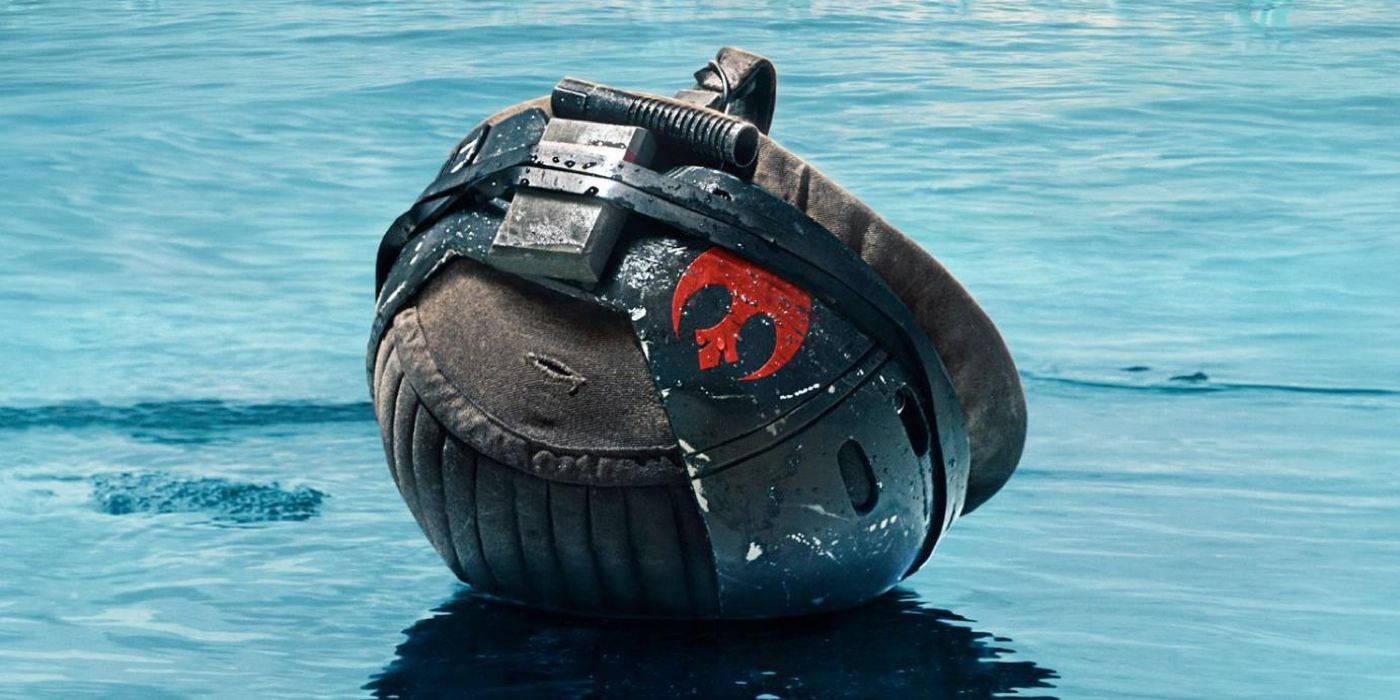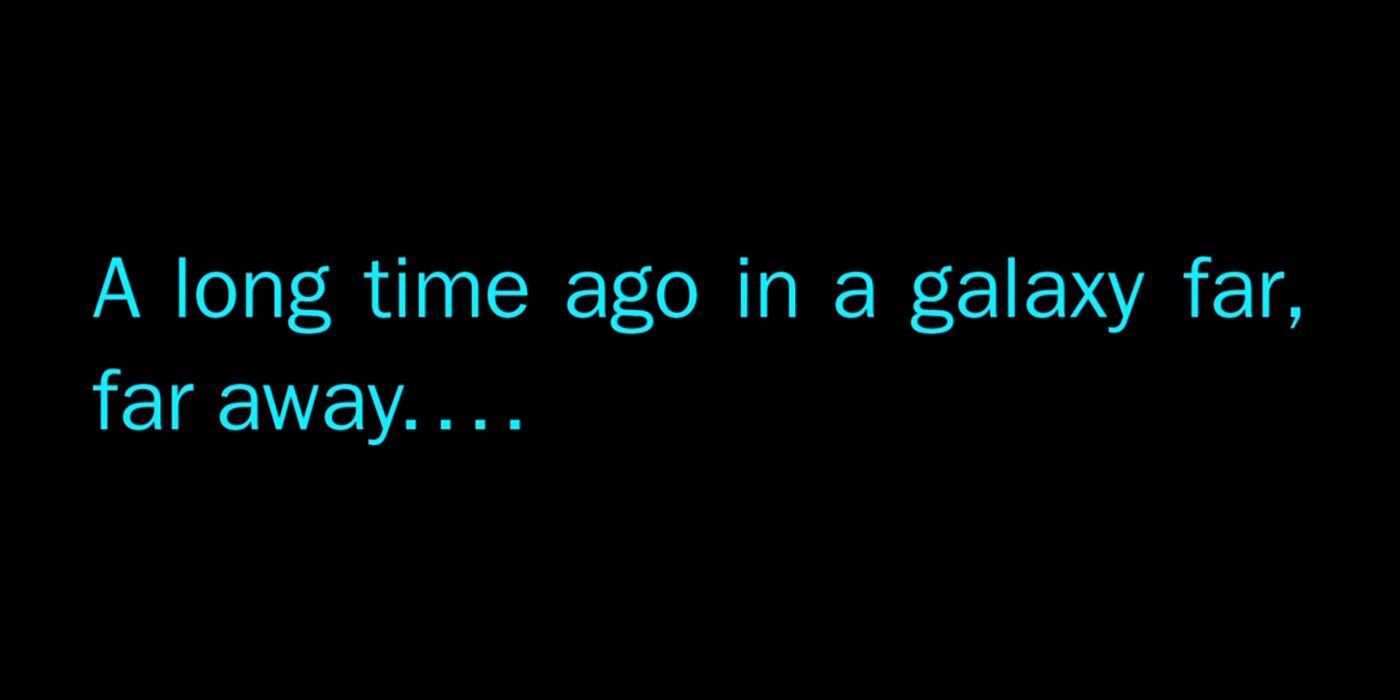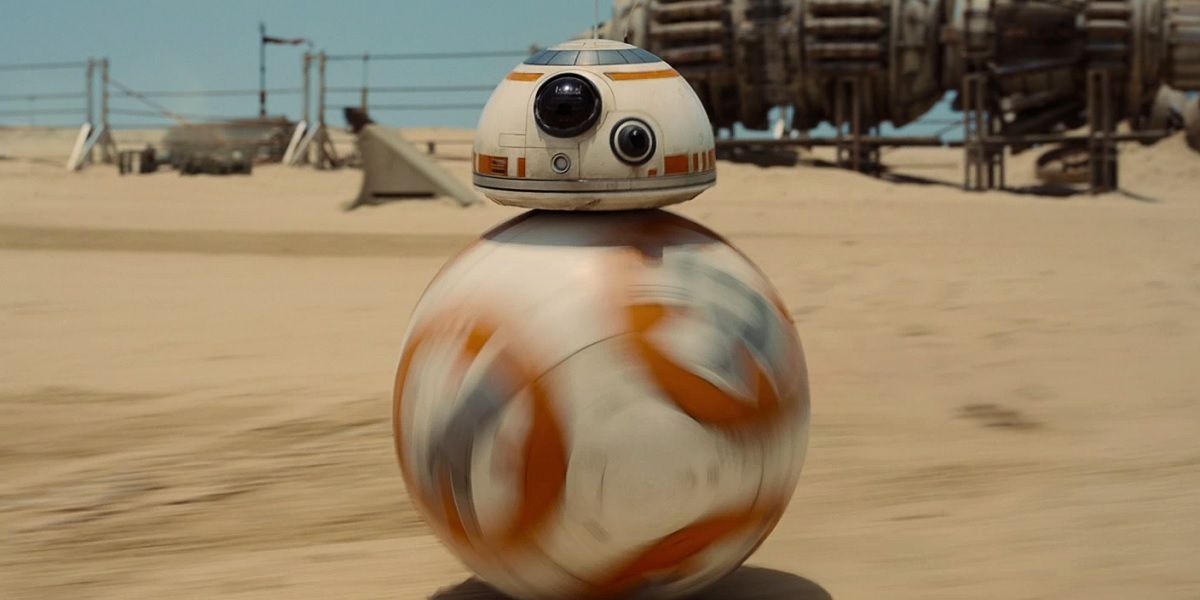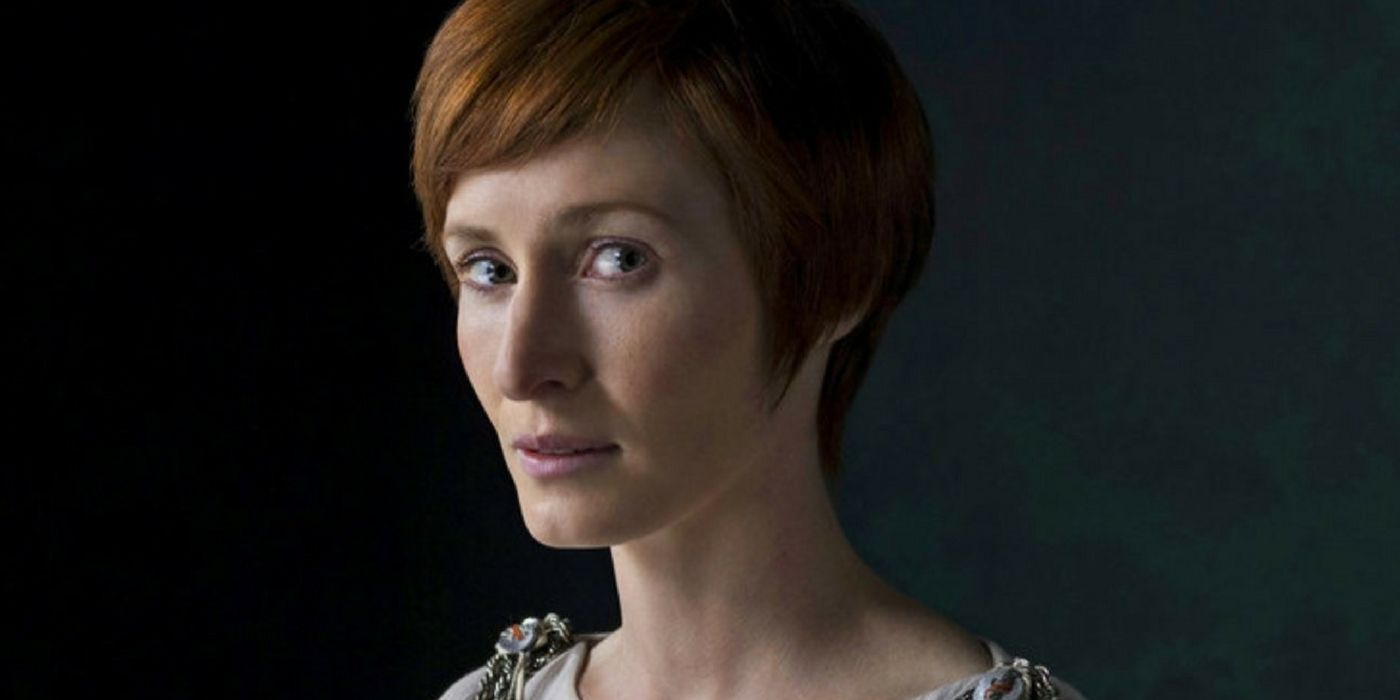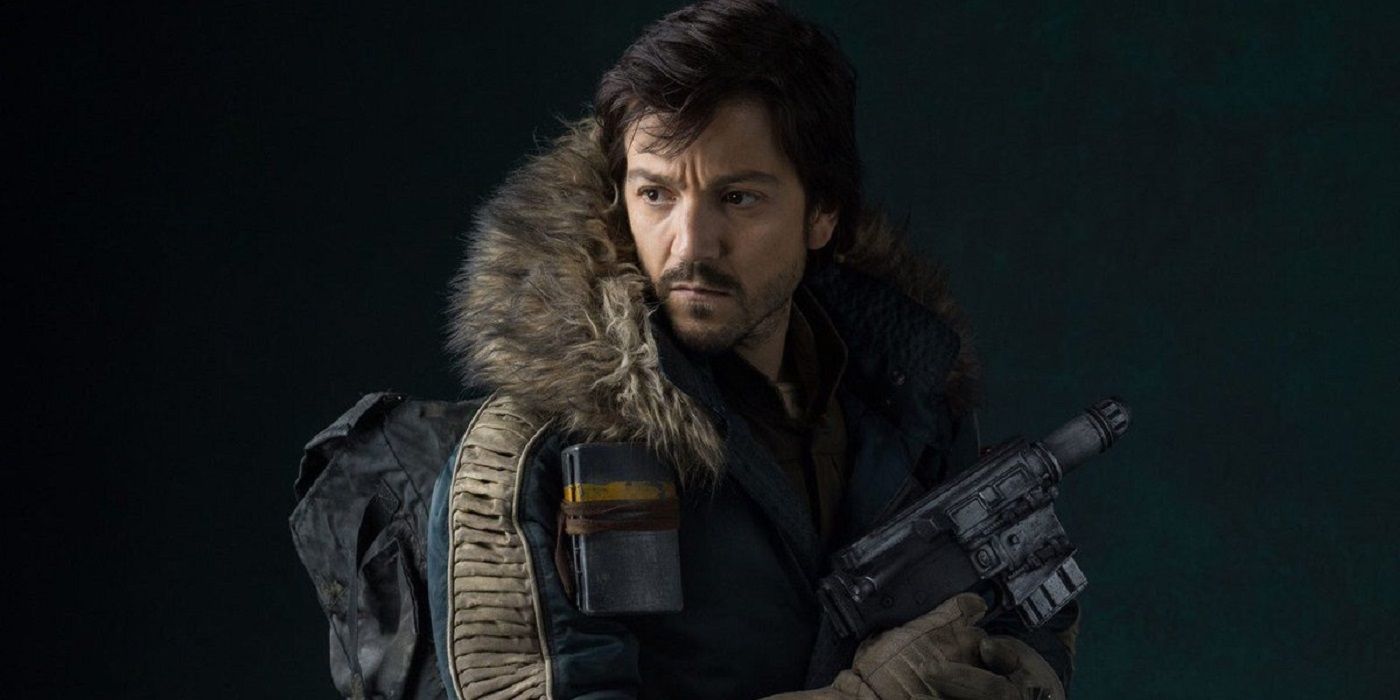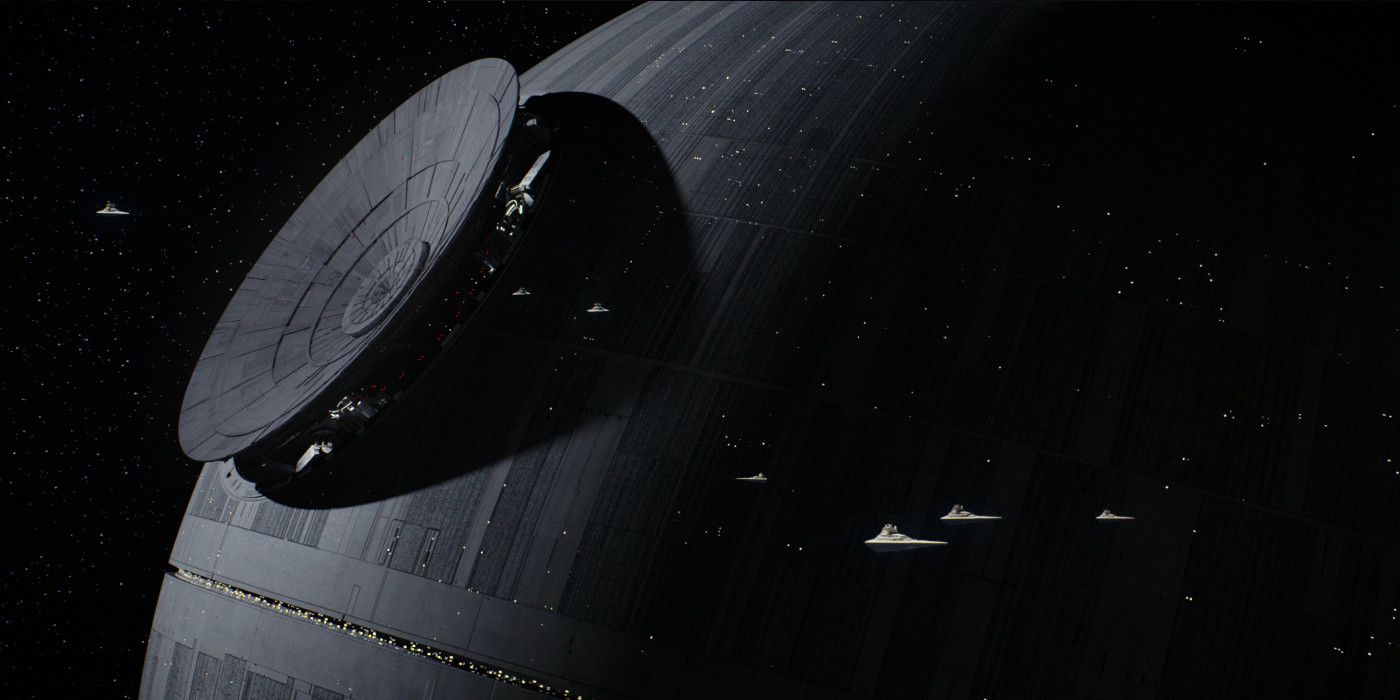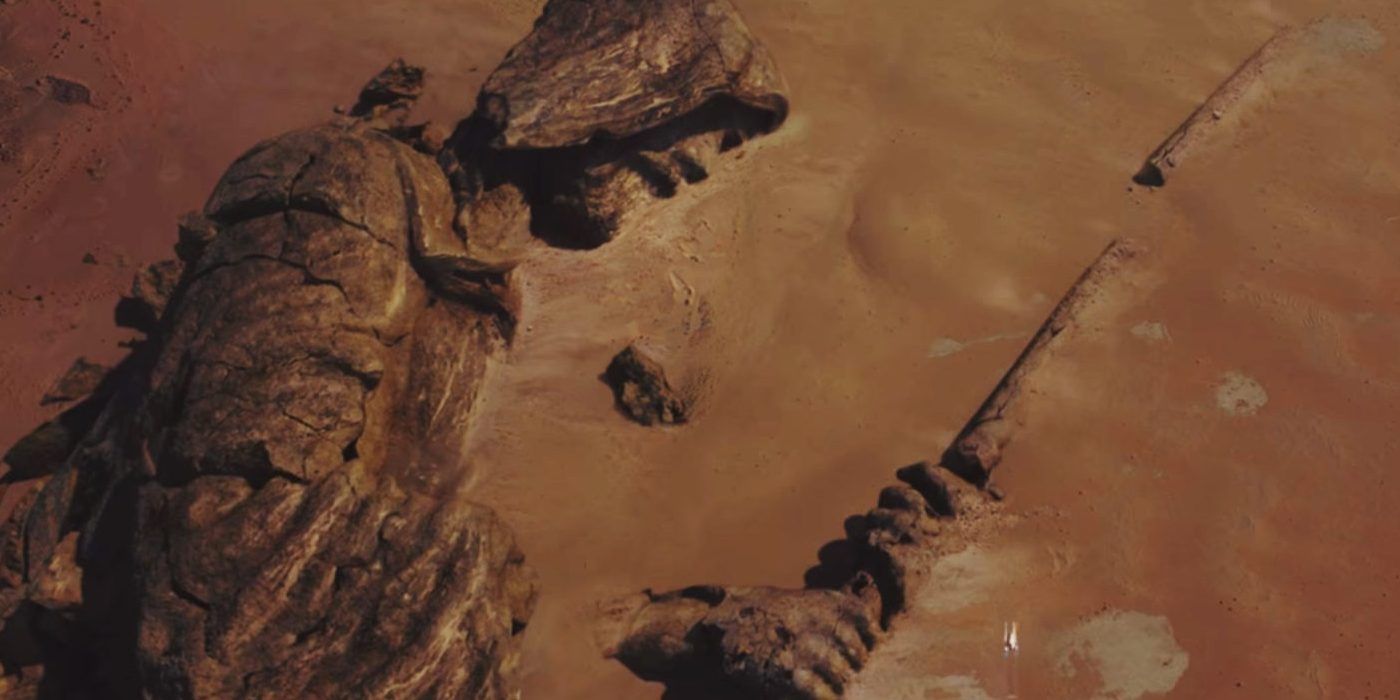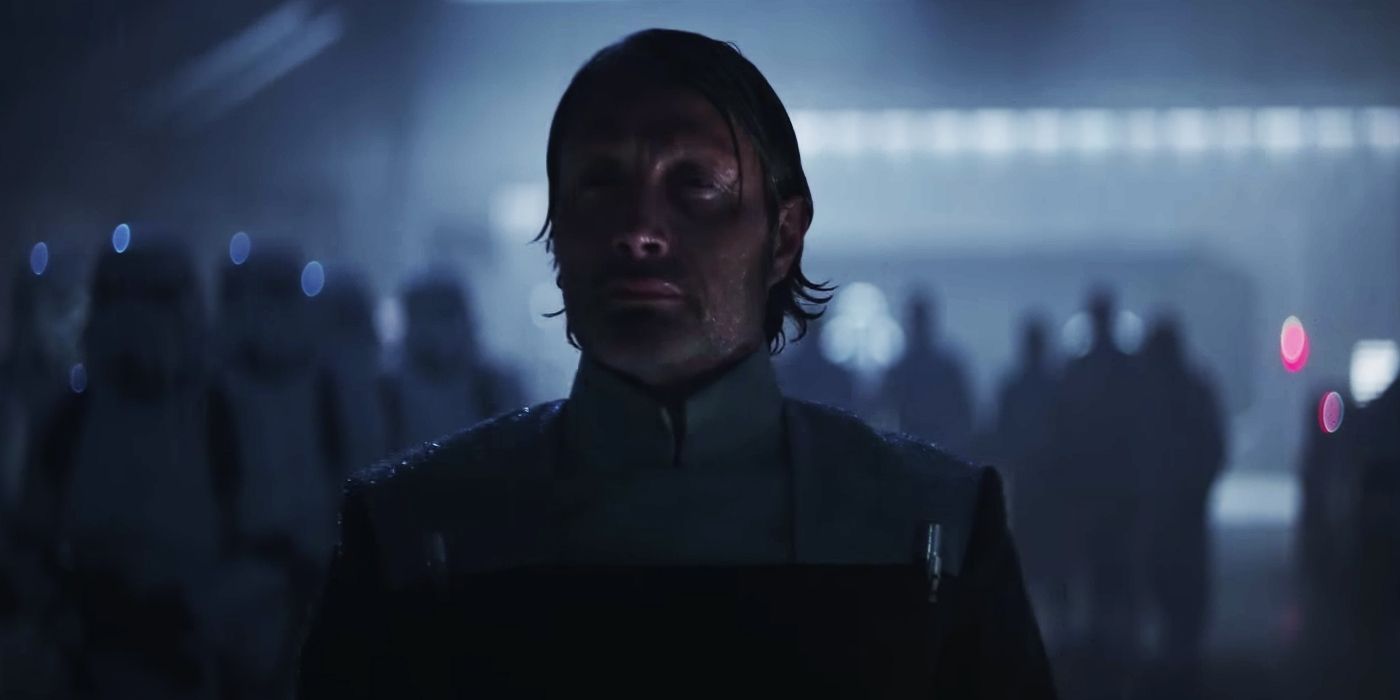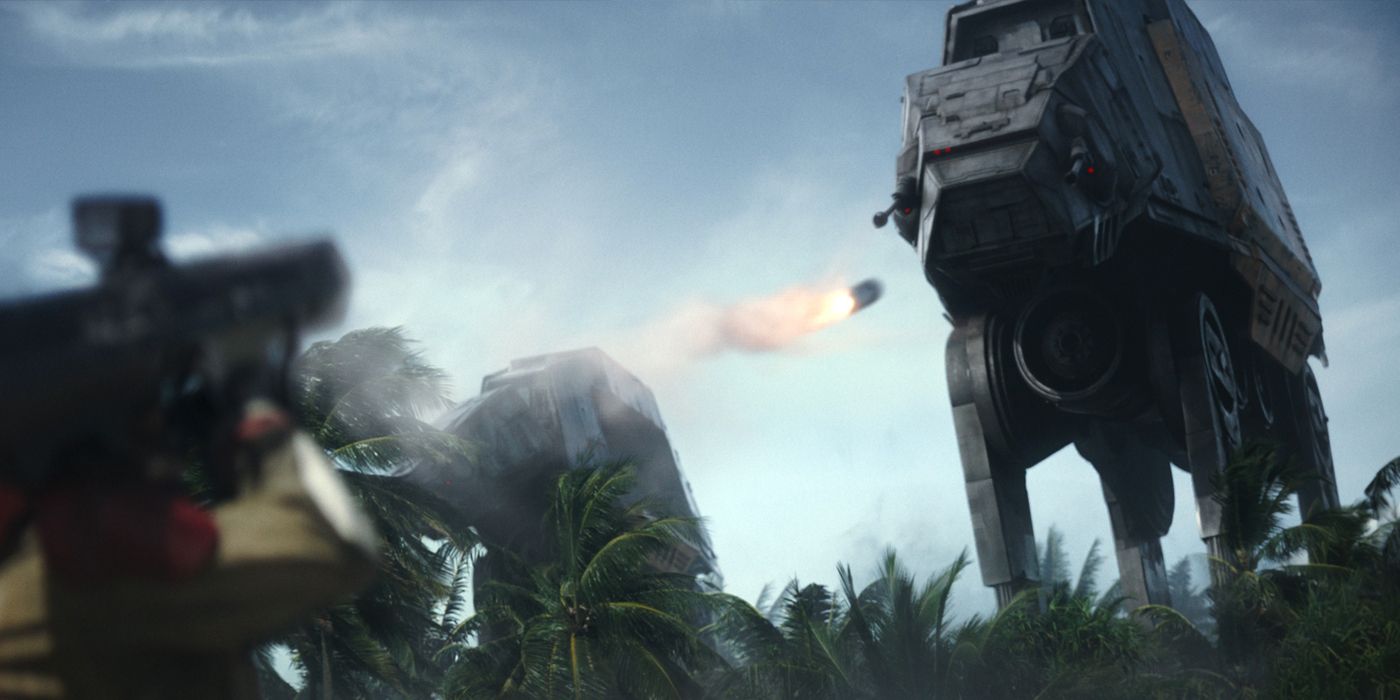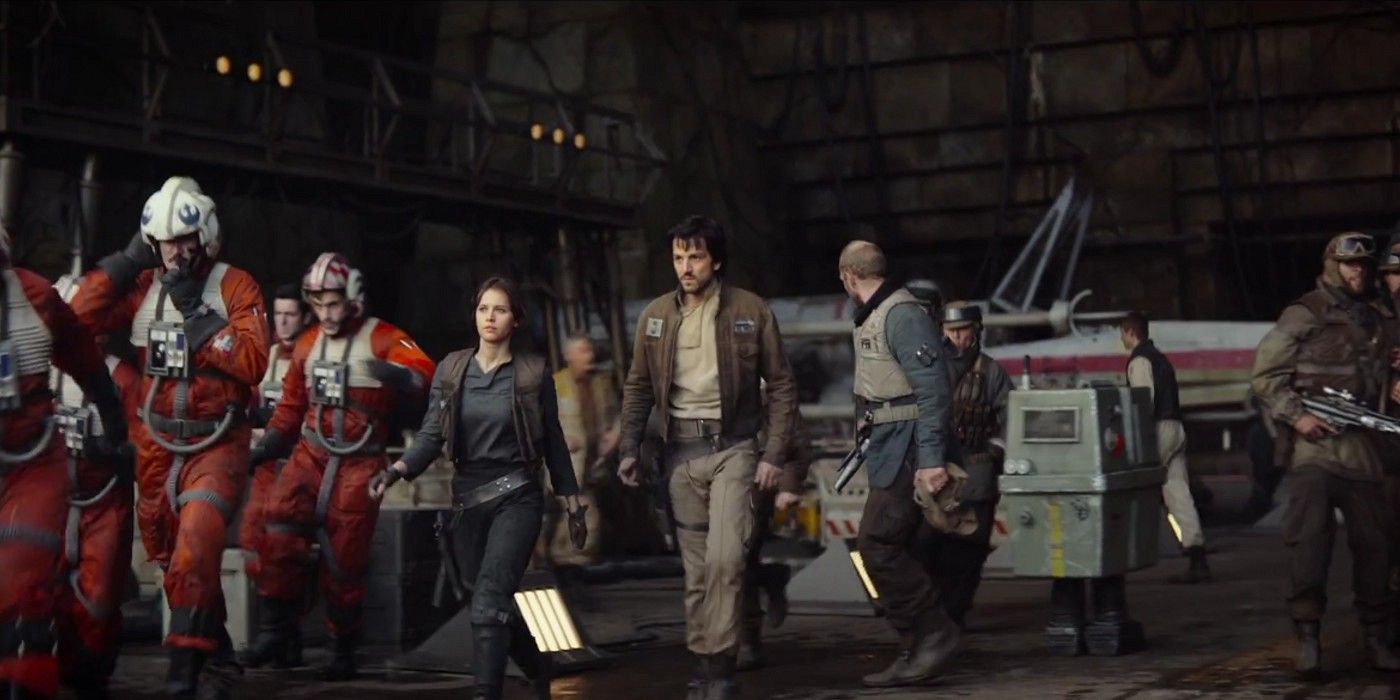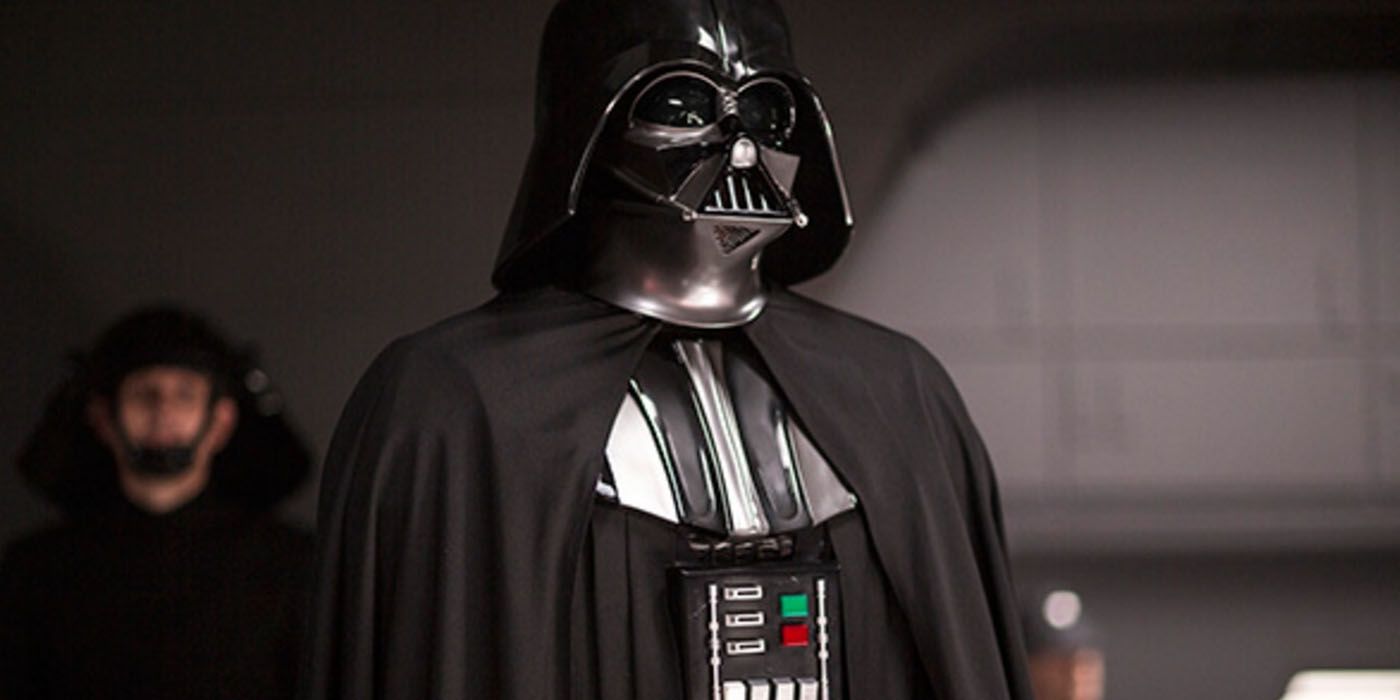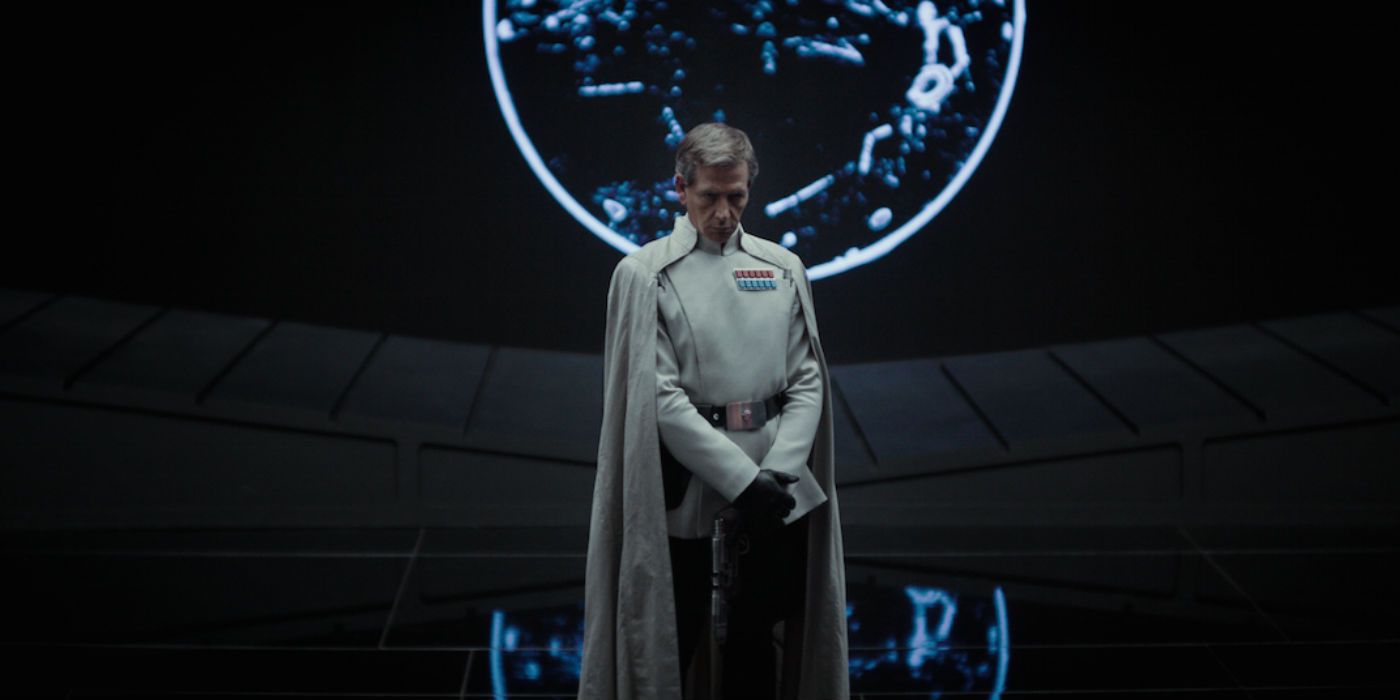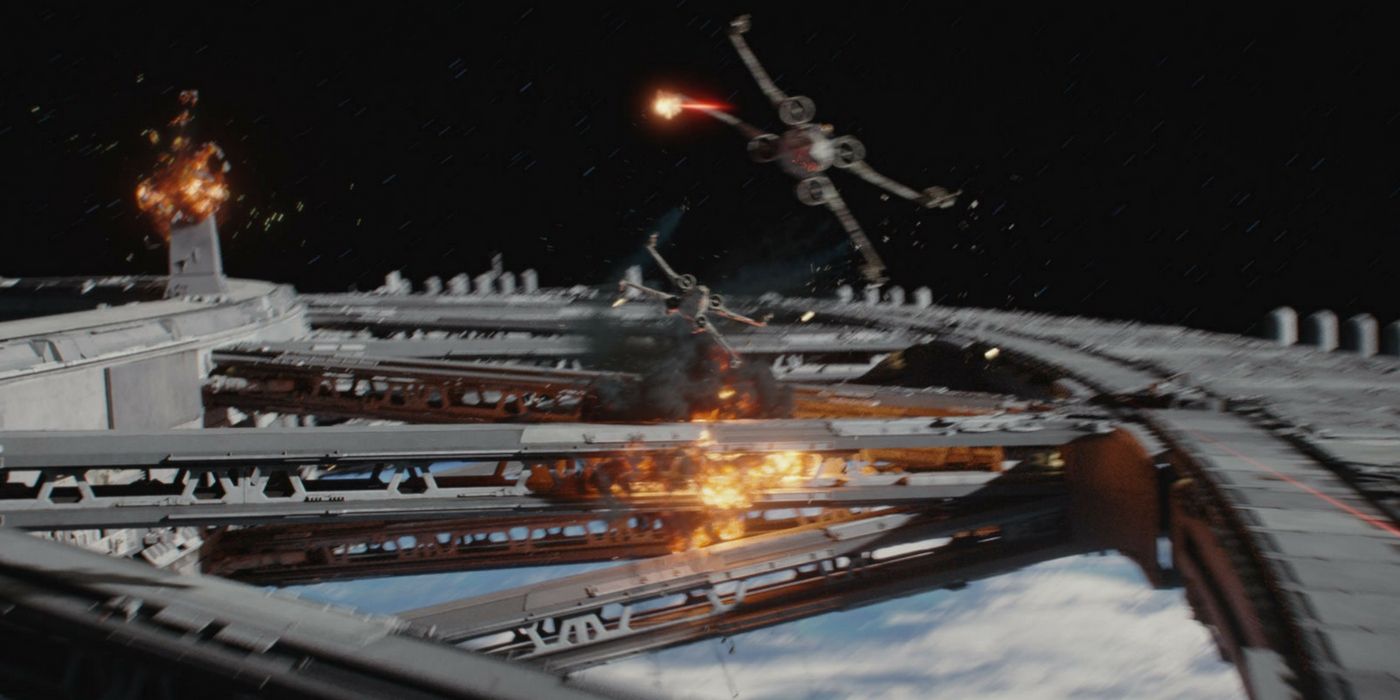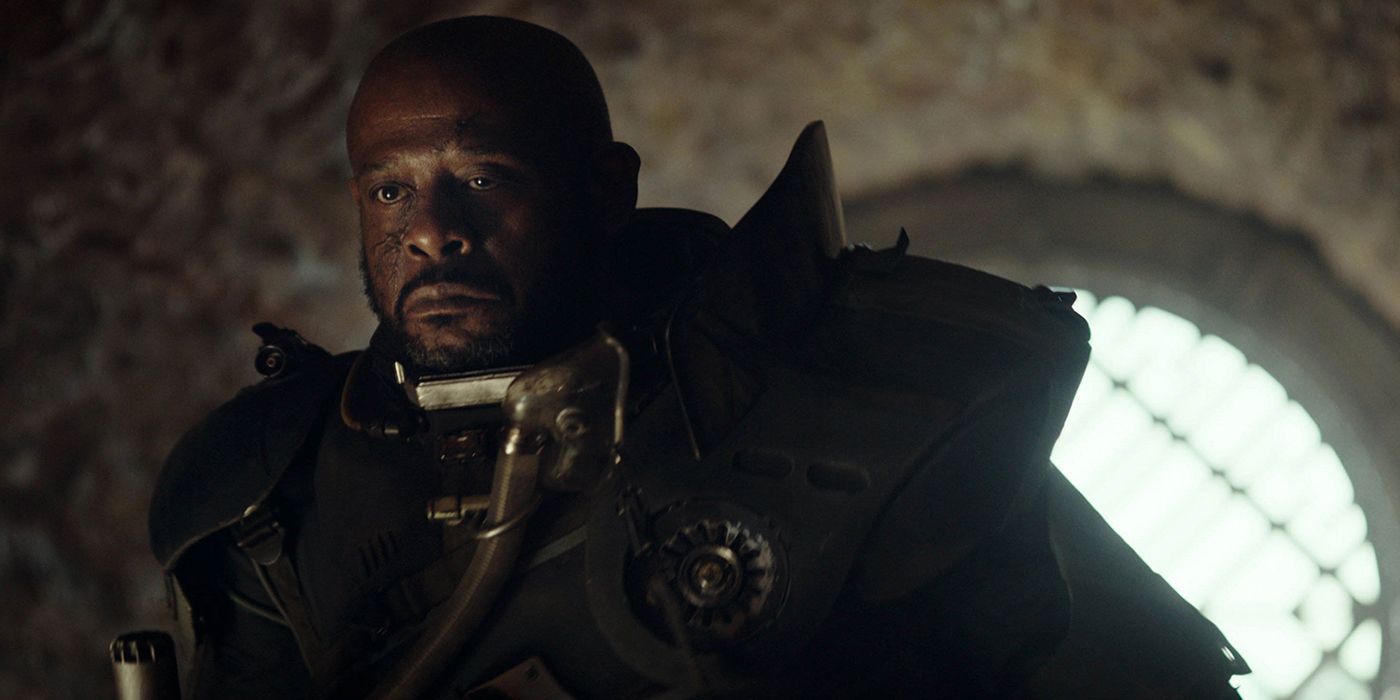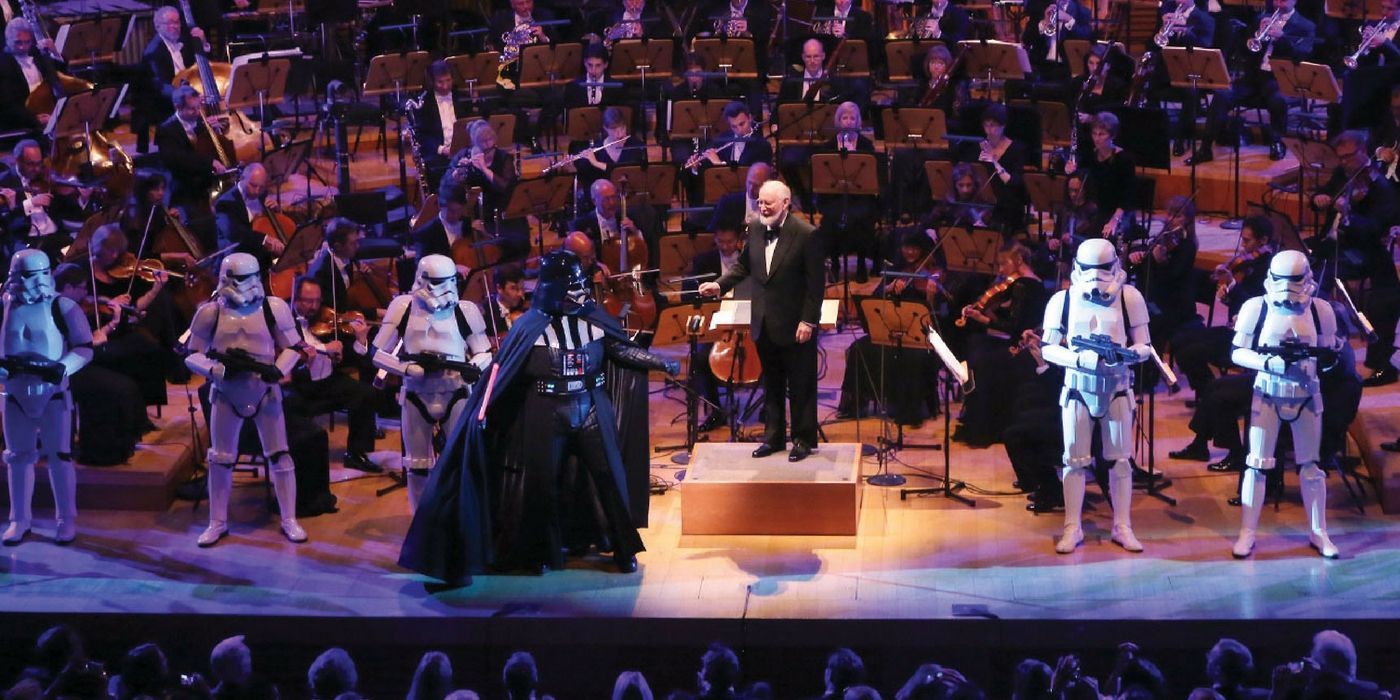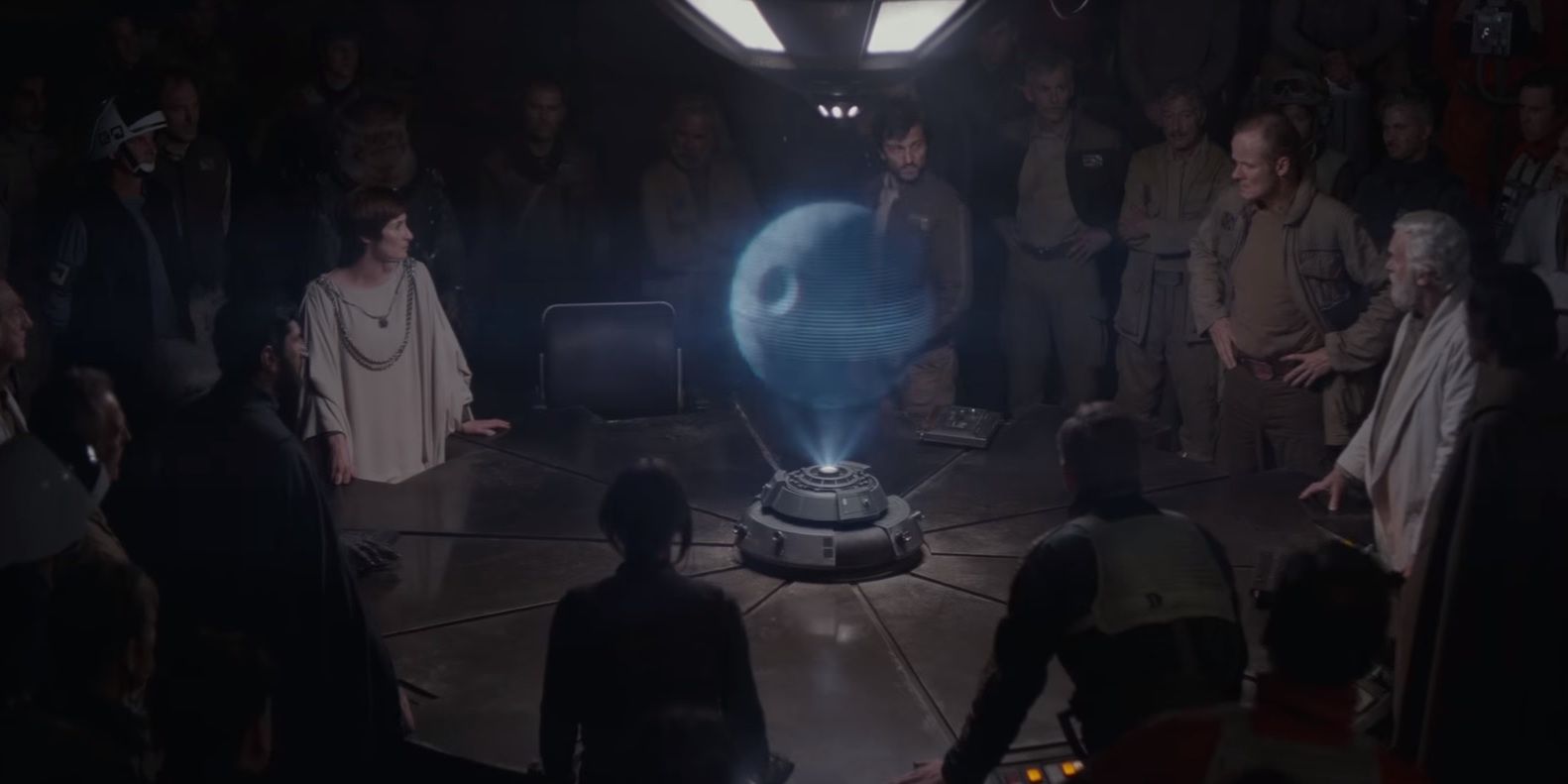A new era of Star Wars begins this December as Rogue One, the very first Star Wars anthology film, opens in theatres. Disney, new parent company of Lucasfilm, has almost as much riding on Rogue One as it did on The Force Awakens. Rogue One will set the standard for anthology films to come, and will prove that the Disney Star Wars films can tell stories with more originality than The Force Awakens did, for better or worse.
Casual observers will no doubt recall that Rogue One had a tumultuous production period of its own. Nobody broke a leg, but the film did undergo an extensive reshoot period, and last minute editing by noted editor Tony Gilroy. Director Gareth Edwards as well as Disney and Lucasfilm executives have all pushed the narrative that the film just needed a bit more attention to create the best movie possible.
So how does Rogue One match up with the rest of Star Wars? Viewers can best decide on their own, though we here at Screen Rant have compiled a few observations on how the movie sticks with Star Wars tradition, and where it breaks to become its own film. No doubt, some in the audience will object to the changes, while others dying for a refreshing story might find Rogue One too close in tone to what has come before it. Either way, check out 7 Ways Rogue One Continues Star Wars Tradition, And 8 Ways It Doesn't.
15. How It Continues The Tradition: "A Galaxy Far, Far Away..."
A good deal of press around Rogue One has noted that the film contains no opening crawl, thus breaking with 40 years of Star Wars tradition. Fans have wondered just how this departure will affect the tone of the movie, not to mention the iconic Star Wars feel. In a clever masterstroke, however, director Gareth Edwards managed to split the difference! Even if the movie does away with the opening crawl, it still retains the famed “A long time ago in a galaxy far, far away…” title card. Thus, audiences enter into the action of Rogue One with a subtle reminder of the Star Wars milieu.
The film also does a great job of retaining other Star Wars touches, revisiting the legendary Rebel base on Yavin 4, recreated with love and detail. The film also reintroduces the sleek look of Imperial facilities, all sterile and smooth, in colors of black white and gray. Rogue One may not feature the name Skywalker—a first for a theatrical Star Wars movie—but never for a moment does the audience forget this is the long ago, far away galaxy of the Force.
14. How It Doesn't: No cutes
George Lucas and Star Wars (as well as Disney) have long endured criticism for the tie-in merchandising of the series, especially toward children. Lucas took particular heat for the Prequel Trilogy and its introduction of Jar Jar Binks as an alleged hook for preschool aged viewers. In short, Rogue One dispenses with the Star Wars “cutes,” big time. No silly ball droids or cuddly Ewoks turn up in the new film, nor does any slapstick humor. Rogue One is easily the most mature Star Wars story to date, playing like an extended version of the desperate Hoth battle in The Empire Strikes Back. The film also tends to avoid humor—at times, a bit too much—in lieu of conversations about the atrocities of the Empire. For that reason, the movie probably won’t do the same kind of business as The Force Awakes, though fans crying out since the days of the Original Trilogy for a darker story should find the movie a thrill.
13. How It Does: Returning Characters
Star Wars films, as the original movie gave birth to a franchise, have always rejoiced in callbacks, in-jokes and self-references to the other films in the saga. Rogue One gets the luxury of standing apart from the rest of the series (the so-called “saga” films), though it still has great fun playing on some of the series trademarks That includes returns by some of the most iconic characters in the saga.
Jimmy Smits returns as Bail Organa, the adoptive father of Princess Leia and Imperial Senator. The actor, afforded so little screentime in the Prequel Trilogy gets another brief if meaty role here, playing on the character’s buzzed about involvement in the Rebel Alliance, and paying off a subtle plot point from Revenge of the Sith and the original Star Wars. A few other characters cameo, including some Rebel pilots, Ponda Baba & Dr. Evazan, as well as some familiar droids. Perhaps most impressive of all, Peter Cushing returns in a substantial role as Grand Moff Tarkin—a feat all the more impressive considering the actor died over 20 years ago! Though realized through some impressive special effects, Cushing manages to give a fine performance, with the eerie coolness of his charisma back in characteristic form. Genevieve O'Reilly returns as Mon Mothma, the Rebel leader. More on her role in a moment...
12. How It Doesn't: No Iconic Characters
If Rogue One makes a mistake, it’s that the film doesn’t spend enough time establishing and enriching its characters. That could have something to do with the much-discussed reshoots for the film, or the last minute editing by Tony Gilroy. The first act—typically the scenes which establish the characters—play with some haphazard intercutting, which makes the plot a bit hard to follow. The movie recovers in the second and third acts with a riveting heist plot and some great action, though the characters themselves never become as vivid as Luke, Yoda, or Darth Vader. That said, the relationships between the characters do evolve, and make them sympathetic. How telling that supporting characters like Tarkin or Mon Mothma upstage their leading counterparts, and that the supporting actors (including the long-dead Cushing) give more memorable performances.
All that said, the plot of Rogue One makes it a compelling film, and casual viewers and Star Wars fanatics alike will root for the characters, even if they’ll not pray for another adventure with them.
11. How It Does: A knockout space battle
No Star Wars film could be complete without a glorious space battle, and Rogue One features one on par with anything seen in the series thus far. Complete with TIE fighters and X-Wings, the climax of Rogue One recalls both the climax of Star Wars and that of Return of the Jedi. Much as Admiral Ackbar stole his scenes in the final battle of Jedi so does the Mon Cal Admiral Raddus of Rogue One. Much like Ackbar, Raddus commands the fledgling Rebel Fleet over the planet Scarif in a battle of thrilling conflict. The climax of Rogue One involves ships within a planet’s atmosphere and other vessels high above in the planet’s orbit, and does a fantastic job of providing a sense of geography, and some new variations on the Star Wars dogfight. The clever lead-in to the original film, complete with the appearances of some familiar faces we dare not repeat here, drive home the scene as one of the most memorable in the series.
Along those same lines, Rogue One takes the visual poetry of Star Wars to an impressive new level. The series has always had its share of jaw-dropping, iconic images, though Rogue One takes the series in a direction more akin to the eerie planetary alignments of 2001: A Space Odyssey or Interstellar. Seldom has the Star Wars galaxy ever looked so elegant, or so haunting.
10. How It Doesn't: The desecration of the Jedi legacy
The subject of the Jedi purge remains a somewhat nebulous subject, even after depicted on screen in Revenge of the Sith and Rebels. How can a monastic order so large and so well known disappear almost overnight, both from the face of the galaxy and its collective memory?
Rogue One offers a bit of explanation. The film endorses the long-held fan theories that the Death Star required Kyber crystals to operate its superlasers—the same kind of crystals that once powered Jedi lightsabers. One eye-popping early scene shows the remains of a Jedi temple on a distant planet called Jedha where the Empire has come to steal the remaining Kyber crystals and destroy the temple. This kind of pillaging goes a long way toward explaining how the Jedi could so quickly fade into legend. With all their monuments and converts destroyed, Emperor Palpatine could wipe away their memory with some simple propaganda. Besides the Jedi Temple, Jedha also becomes one of the most memorable environments in all of Star Wars thanks to subtle touches that make it resemble a sort of intergalactic Jerusalem. Scenes of stormtroopers rolling through the streets on tanks and AT-ST walkers also evoke unpleasant memories of conflicts in the real world.
9. How It Does: It's about family conflict
Star Wars has a long tradition of plots that involve family conflict, at times, in an unapologetically soapy way. Rogue One continues that tradition, dispensing with the ongoing tale of the Skywalker family and instead focusing on the Erso clan. In a sequence that recalls the off-camera death of Uncle Owen and Aunt Beru Lars, Rogue One opens by establishing Mads Mikkelsen’s Galen Erso as a doting father who’s work as a scientist has attracted the wrong kind of attention. His old friend Director Orson Krennic, played by a calculating Ben Mendelsohn, arrives to claim Galen’s services for the Empire, thus beginning a revenge subplot that will span the film’s runtime. In contrast to the original Star Wars, however, Rogue One takes a different approach, depicting the Imperial attack in a frank and frightening way. The sequence also helps the family identify with the young girl that will become the story’s main protagonist—Jyn Erso, played as an adult by Felicity Jones.
Even in this most general of terms, establishing the Erso family and Krennic’s disruption of it harkens back to Luke’s initial hatred of the Empire, and his “you killed my father” vendetta against Darth Vader. Jyn’s story will likely never get the kind of subversion that Luke’s did, but even in this basic form, it plays like a Star Wars story all the way.
8. How It Doesn't: Adult themes
Director Gareth Edwards has long called Rogue One both a heist film and a war film, and the movie goes a long way toward earning both distinctions. Rogue One takes Star Wars to a darker and more frightening place than the series has ventured before, and introduces a number of adult themes to the plot. The opening scenes of Galen Erso’s kidnapping establish the Empire as a ruthless cabal in a very human way. Likewise, the character of Saw Gerrera—already loved by fans thanks to his appearances on Clone Wars—comes of like something of a fanatic, a cross between Osama Bin Laden and Che Guevera, with a hint of Blue Velvet’s Frank Booth thrown in for good measure. Both the Empire and the Rebel leaders express their frustration and disdain for the man. Gerrera’s role also opens the door to another dark subject: torture in Star Wars. In previous films, the few instances of torture have come more from implication. Rogue One shows at least one scene of torture in violent detail.
Above all though, the idea of the bittersweetness of hope rests at the movie’s heart. The characters in Rogue One all do, or have done, terrible things in the name of survival. The Rogue One team embarks on an impossible mission knowing they will probably die, even if they succeed. They choose to go anyway, because they believe in the cause of the Rebellion, and because they want to seize the opportunity to bring a new hope to the galaxy.
7. How It Does: Reluctant Heroes
The tradition of reluctant heroes has long added to the appeal of Star Wars dating back to the original film. None of the film’s leads—Han, Luke, Leia or even Obi-Wan—really want to get involved with a conflict against the Empire. Luke just wants to go to flight school, and later to become a Jedi. Han wants to get paid. Leia, though a Rebel Leader, wants to get home to Alderaan, and Obi-Wan seemed to enjoy his retirement on Tatooine. Rogue One continues the precedent, but dials the hesitation to a much higher volume. Jyn Erso wants nothing to do with the Rebel Alliance, nor do Donnie Yen’s Imwe or Jiang Wen’s Baze Malbus. Even Cassian Andor, the a Rebel spy and assassin, would prefer a covert existence to full on war. This makes the actions of the characters all the more interesting.
Even better, Rogue One avoids the pitfalls of some of the more recent Star Wars entries, in particular, The Force Awakens. In that film, Rey, Poe and Finn become fast friends with no conflict between them. In contrast, the heroes of Rogue One live in shades of gray, and often butt heads. Thus, they become friends over the course of the film, which makes their ultimate fates all the more moving, and their story more endearing.
6. How It Doesn't: Darth Vader is a Monster
Until the sale of Lucasfilm to Disney, the entire saga of Star Wars rested on the fall of Anakin Skywalker. Anakin’s turn to the Dark Side of the Force and his rebirth of Darth Vader fueled the story of the Original and Prequel Trilogies. Rogue One, as an anthology film, takes advantage of its unique position away from the Skywalker family. As such, it sees Darth Vader from a far, and evokes a dark terror not seen since The Empire Strikes Back. Die-hard fans will also squeal at the sight of a location long-discussed in Star Wars lore seen for the very first time. No doubt, they will also rejoice as the man in black returns in a very frightening way.
Rogue One, like its characters, sees Darth Vader as a terrifying monster, pure and simple. Vader’s actions in the film, though brief, go a long way to justifying that sentiment. Never has the Lord of the Sith looked so frightening on screen. For that matter, never before has Vader, once again voiced by the legendary James Earl Jones exuded such rage. Jones modulates his performance to resemble the more unhinged Vader of the original film (keen eyes also will spot several details in his suit identical to its New Hope incarnation). Vader might not have much screentime in Rogue One, but the film reverberates throughout with his presence.
5. How It Does: It's about the race for the Death Star Plans
The original Star Wars used the Death Star plans as a Maguffin—the term devised by Alfred Hitchcock to denote what it was that all the characters wanted, which in turn drove the plot. Rogue One uses the same Maguffin, more or less, as the characters search for the knowledge of the Death Star’s flaws, eventually opting to steal the plans for the battle station. The fear of the imminent activation of the Death Star helps bring the Rebellion out into the open, and presses the Alliance leaders to begin calling old allies out of exile. It also brings the band of heroes—collectively dubbed “Rogue One”—together and to action. Much as Han, Luke & Leia get involved in the Alliance for different reasons, but come together out of a higher need for hope and to do the right thing, so do Jyn, Cassian and the rest join forces. Whereas the quest for the plans in A New Hope never quite seemed to have a certain gravity (even after the destruction of Alderaan), the race for the plans in Rogue One feels life-or-death all the way.
4. How It Doesn't: Conceits like how one ventilator shaft can sink a Death Star get great explanations
Star Wars has a history of conceits of storytelling. All movies do, of course, though at times the saga of a long ago, far away galaxy takes advantage! For example, how fortuitous that Luke Skywalker should find the very droids dispatched to Obi-Wan Kenobi. Rogue One has some conceits of its own, though they don’t stand out as such. Even better, the movie goes even further explaining away some of the glaring conceits of the original film!
Just how can one ventilator shaft destroy a station the size of a moon? Rogue One comes up with an inventive reason why, which becomes a central issue to the plot. We cannot, of course, reveal more here, our readers would likely enjoy letting the movie exposit on this point, other than to say that the film’s logic satisfies. The reasons for Princess Leia wearing her hear in the shape of a pair of cinnamon rolls, however, remain unexplored.
3. How It Does: Clone Wars references
Much as Star Wars added a layer of intrigue and mystery by introducing the concept of the Clone Wars as a backstory to the origins of the Empire and the Rebel Alliance, so does Rogue One benefit from using the Clone Wars as a lead in. In a post-prequel, post-Clone Wars era, invoking the Clone Wars posed perils for director Edwards and his writers, Chris Weitz and Tony Gilroy. How much canon and history should the individual films, in particular, the anthology films, introduce to their plots?
Rogue One does a great job of weaving the Clone Wars concept into the film’s main plot, including making subtle references to the history as established in previous films and on television. An incidental character from Clone Wars makes a live-action appearance (a first for a historically animated Star Wars character) in the person of Saw Gerrera. As played by Forrest Whitaker, Gerrera has aged from the rebellious youth of Clone Wars into a scarred and wary soldier. In fact, Whitaker just about steals the movie with his brooding, half-mad performance. His Saw has seen a lot in his life, and provides living proof of the high cost of war in the Star Wars universe.
2. How It Doesn't: No John Williams
Rogue One breaks with another Star Wars precedent, becoming the first live-action film not to have a score by the great John Williams. Again, that fits with Rogue One as a Star Wars film outside the rest of the saga. It does, however, make for a frustrating experience at times. Williams, after all, isn’t an ordinary film composer. Rather, he’s the film composer, the great songster behind the iconic themes from Star Wars, Harry Potter, Superman and E.T.: The Extra Terrestrial. Williams’ reputation stands so far above Star Wars that it would take another giant to fill his shoes. Unfortunately, Michael Giacchino’s new music falls flat, despite reprising a few strains of Williams’ iconic work. If nothing else, the forgettable score of Rogue One further underlines the amazing contribution of Williams to Star Wars both old and new. Music can go a long way to adding thrills to a cinematic experience, but the Rogue One score adds none. The magic and mystery of John Williams’ music is sorely missed.
1. How It Doesn't: Conflict within the Rebellion
The Original Trilogy never went into great detail about the political hierarchy of the Rebel Alliance. Princess Leia held a position of authority, as did Mon Mothma and Admiral Ackbar, but the movies always seemed more preoccupied with moving from one battle to the next. Rogue One takes advantage of its time setting to offer more insight to the Rebellion, and to great effect. Actress Genevieve O’Reiley, hereto known for playing Mon Mothma in one brief scene in Revenge of the Sith returns to the part, and delivers one of the film’s most compelling performances. Far from some imperious magistrate, her Mon Mothma survives through political cunning, using her charisma to hold the Alliance together.
Yet for all of Mon Mothma’s strengths, fractures show in the Alliance. Rogue One has some dramatic scenes of infighting among the Rebel leaders, as they debate a course of action against the Death Star. It doesn’t help that a handful don’t even believe the Death Star exists, or that a few have come to doubt the Alliance’s objectives in the wake of Saw Gerrera’s fanatic terrorism. If the Prequel Trilogy focused too much on galactic politics and The Force Awakens ignored them to a fault, Rogue One finds a great balance, enriching the story while also keeping the plot moving.
---
How did Rogue One compare to other Star Wars? Tell us in the comments!
KEY RELEASE DATES
- Star Wars: Rogue One / Rogue One: A Star Wars Story release date: Dec 16, 2016
- Star Wars 8 / Star Wars: Episode VIII release date: Dec 15, 2017
- Untitled Han Solo Star Wars Anthology Film release date: May 25, 2018

